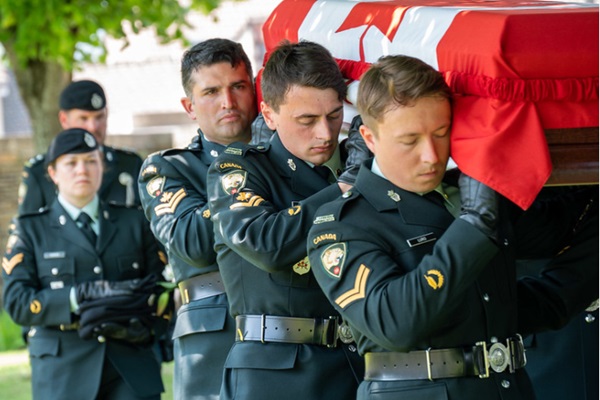How do we identify unknown soldiers? The CAF’s forensic anthropologist explains
November 3, 2025 – Defence Stories
Estimated read time – 2:15

Caption
Dr. Sarah Lockyer, coordinator of the Casualty Identification Program.
Photo credit: Dr. Sarah Lockyer.
Dedicating yourself to a task that will take months or even years seems daunting. In the casualty identification business, you never really know.
The Casualty Identification Program works to give a name and face to Canadians who have died in the service to Canada. The program has a small but mighty team, led by coordinator Dr. Sarah Lockyer , who holds a PhD in bioarchaeology and is the sole forensic anthropologist for the Canadian Armed Forces (CAF).
In contrast to her colleagues, who are all historians, Lockyer specializes in analyzing human skeletal remains and coordinating the program. This coordination was crucial during the process of identifying Captain William Webster Wilson in June because he had already been buried as an unknown soldier, so Lockyer was unable to perform a skeletal analysis.
It’s not an easy job
Though her team has grown, the lack of available information remains an obstacle to their work. Certain crucial records concerning casualties, such as dental records, were often destroyed after a conflict. Although the extensive digitization of documents has helped with that, many remain untraceable.
What’s more, DNA analysis is essential, but it is “extremely complicated and not as easy as they make it look on TV,” Lockyer says. “Finding a descendant takes time, and the team has to convince them to provide their DNA before they hang up.”

Caption
The Casualty Identification Program gives CAF members back their names.
Photo credit: Dr. Sarah Lockyer.
“We spend a lot of our time just reassuring people that we’re legitimate. We often use CBC articles, and sometimes even BBC ones: these are super useful for the people we communicate with in Scotland or England.”
And Lockyer explains that the research is definitely not linear. “Sometimes, you can go to task C and there’s a problem, so you have to go to task A. Then, all of a sudden, you’re off in a completely different direction because the data you’ve uncovered changes everything.”
While their fastest case was solved in six months, the identification of another set of remains took eleven and a half years. Lockyer likens the process to a “jigsaw puzzle with no edges.”
To facilitate the undertaking, relatives of war dead with no known grave (either from the First World War, the Second World War, or the Korean Conflict) are invited to get in touch with the program.
What Lockyer has learned the most: perseverance. “You can’t get really disheartened when it doesn’t work out, which is bound to happen. You need to have drive to keep going, even when the outcome wasn’t what you’d been looking for.”
By identifying each fallen soldier, the program brings families together and fosters a sense of belonging within the CAF. For Lockyer, these are the most rewarding aspects of her work.